Traditional product development is notoriously long-winded with considerable time spent on research, design, and testing before product launch. Look no further than the video game industry’s “Duke Nukem Forever” for a classic case of development hell. Announced in 1997, this highly anticipated game was plagued by repeated changes in game engines, management issues, and a lack of clear direction. It was released fourteen years later, by which time the industry had drastically evolved, and the now outdated game had seriously missed the mark.
This guide outlines how development teams can move away from archaic processes and switch to Agile product management, as a fast and versatile alternative. We also introduce monday dev as the perfect platform to house your product management strategies.
Try monday devWhat is Agile product management?
Agile product management is a modern, iterative approach to developing products, based on the 2001 Agile Manifesto, which focuses on four core values:
- Individuals and interactions
- Working software
- Customer collaboration
- Responding to change
In product management, the Agile methodology prioritizes customer satisfaction, continuous improvement, and strong team communication, making it an ideal framework for businesses looking to keep up with constantly evolving market demands.
Agile product management example
Imagine a gardening company ready to develop a new weeding gadget. In an Agile framework, the product manager organizes multiple concurrent sprints to optimize the new product’s development.
- Sprint A’s team handles the core design and prototyping of the weeding device, focusing on functionality and user ergonomics.
- Sprint B’s team works in parallel to innovate additional features, such as a sensor-based system for distinguishing between weeds and plants.
- Sprint C’s team is deeply involved in market research, understanding customer pain points in gardening, and identifying potential competitors.
Regular daily standups and review meetings ensure that each team is aligned, allowing them to swiftly incorporate feedback from gardeners and focus groups, adjusting the design and features of the weeding device as needed. This collaborative approach ensures the final product is functionally effective and meets market needs.
Post-launch, the teams continue their parallel efforts, gathering customer feedback for continuous improvements and closely monitoring market trends to maintain the product’s relevance and appeal in the gardening community.
Read also: Project Management vs Product Management
What are the main benefits of agile product management?
In traditional product management, there are set plans, strict timelines, and task dependencies that may appeal to those who prefer a rigid structure. But there are undeniable benefits available if you switch to Agile:
- Faster time to market: Agile’s ultimate aim is to deliver value as soon as possible, significantly reducing product development time. This is a priority for 52% of Agile teams.
- Improved product quality: Continuous feedback loops enable your team to make changes and optimize design along the way, resulting in a more refined product.
- Increased customer satisfaction: Keeping your end user in mind throughout development produces excellent results, including the potential to increase commercial performance by 277%.
- Greater risk mitigation: Risks and weaknesses are minimized through smaller and more manageable increments, making it easier to pivot if necessary. 31% of product teams consider Agile crucial for curtailing relevant risks.
- Enhanced flexibility: Agile is adept at adapting to changes, for example, market trends or customer needs.
What is involved in Agile product management?
Agile product management involves a series of structured yet flexible processes, each playing a critical role in guiding the product from concept to completion. These include:
- Product vision and strategy development: Setting clear, long-term goals for the product.
- Creating a product roadmap: Outlining the steps needed to achieve your product vision.
- Defining personas. Fleshing out user stories to demonstrate empathy with the customer and their requirements.
- Product backlog prioritization: Organizing tasks, like bug fixes, in order of importance.
- Sprint planning and execution: Short, focused phases of work to accomplish specific goals.
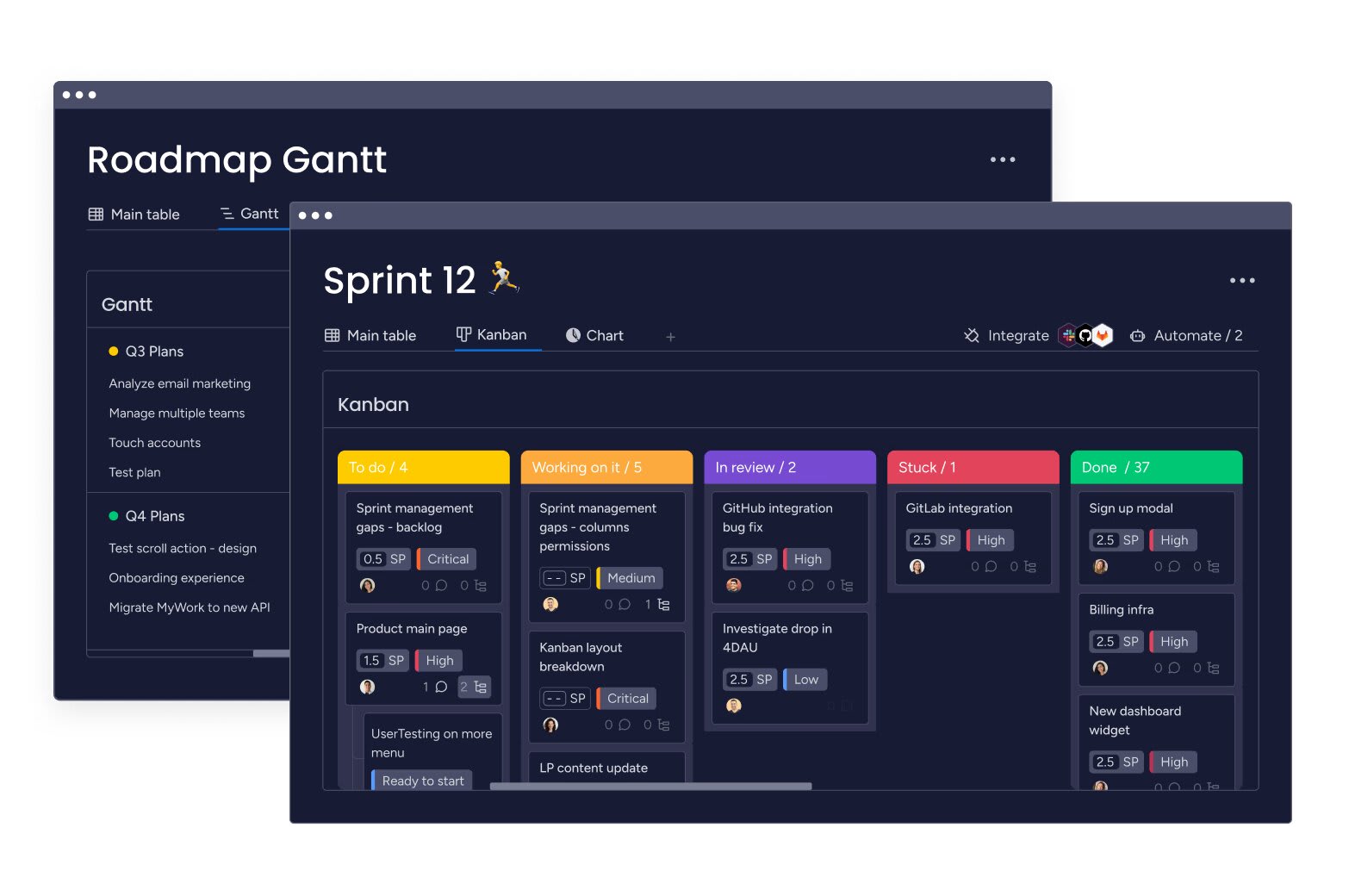
- Daily stand-ups: Regular meetings to check in with team members, ensure alignment, and address obstacles.
- Sprint review: Evaluating work completed in a specific sprint while planning for the next.
- Iterative development: Continuously improving the product based on user feedback.
- Release planning and development: Planning for the product release phases.
- Monitoring and adaptation: Keeping track of progress and adapting as necessary.
5 best practices for an Agile product manager
An Agile product manager can feel like they’re juggling multiple balls at once. But implementing these five best practices will keep the balls moving in unison to ensure a successful product launch:
1. Focus on customer value
Agile product management’s primary objective is to deliver customer value. This means consistently communicating with and understanding the customer’s perspective, needs, and expectations throughout development. The product manager must ensure that every feature or product increment meets or exceeds the customer’s needs and should be ready to pivot or make changes based on customer insights.
2. Prioritize cross-team collaboration
55% of Agile converts consider high levels of communication and collaboration a best practice among team members. Product managers must provide an environment to make this easy, such as daily check-ins, open communication lines, and shared transparency tools. This allows team members to brainstorm ideas, solve problems, and work towards a common goal.
3. Encourage constructive feedback
51% of Agile teams list continuous improvement techniques as a best practice; constructive feedback specifically can lead to valuable insights and improvements in the development process. Product managers should provide systems for research teams, developers, and customers to share their thoughts and ideas, even if they differ from the current plans.
4. Provide clear directions
Fluidity is the name of the game in Agile, as teams absorb feedback to determine their next move. However, the product manager must provide direction in an Agile cycle to ensure that development stays on track. 31% of Agile teams report that they experience problems when leaders don’t set clear goals.
5. Lean on metrics
Data is just as valuable in Agile as in traditional product management processes. A data-driven approach helps you track progress, measure success, and inform your decision-making. An Agile product manager might use velocity metrics, burndown charts, and customer satisfaction scores to guide their product strategy. You can track these and more in monday dev.
Try monday devReal-world examples of companies using Agile product management
Wondering what Agile looks like in real life? Here are three examples of companies that have achieved results using Agile product management.
1. Ericsson
Ericsson’s Media Gateway for Mobile Networks initially used a waterfall model to develop its products. But this approach created organizational silos where product knowledge was limited to just a few people, resulting in long lead times and disorganized feedback loops. After Ericsson switched to Agile after a successful pilot, the company experienced shorter release times and a better process flow.
2. Cisco’s Subscription Billing Platform
Cisco’s Subscription Billing Platform also used the waterfall method, where different design, build, test, and deployment teams worked on their product management tasks and responsibilities in sequence. Cisco switched to an Agile model to improve release cycles and quality while keeping budget in check. The company reduced defects by 40% and increased defect removal efficiency by 14%.
3. Fitbit
Fitbit needed to scale its production to meet consumer demand around the holiday season. The company added more teams and functional groups to boost velocity and cadence by taking an incremental approach to its product management. Within a year of switching to Agile, Fitbit had released four new products and shipped 22 million devices.
monday dev: The one-stop platform for Agile product management
monday dev provides a central location to organize the many moving parts involved in Agile product management. Here are the main features that enable product and development teams to plan, build, and launch new products from a single place.
- Sprint management: Manage the lifecycle of your sprints, from planning and prep work to retro and sprint reviews.
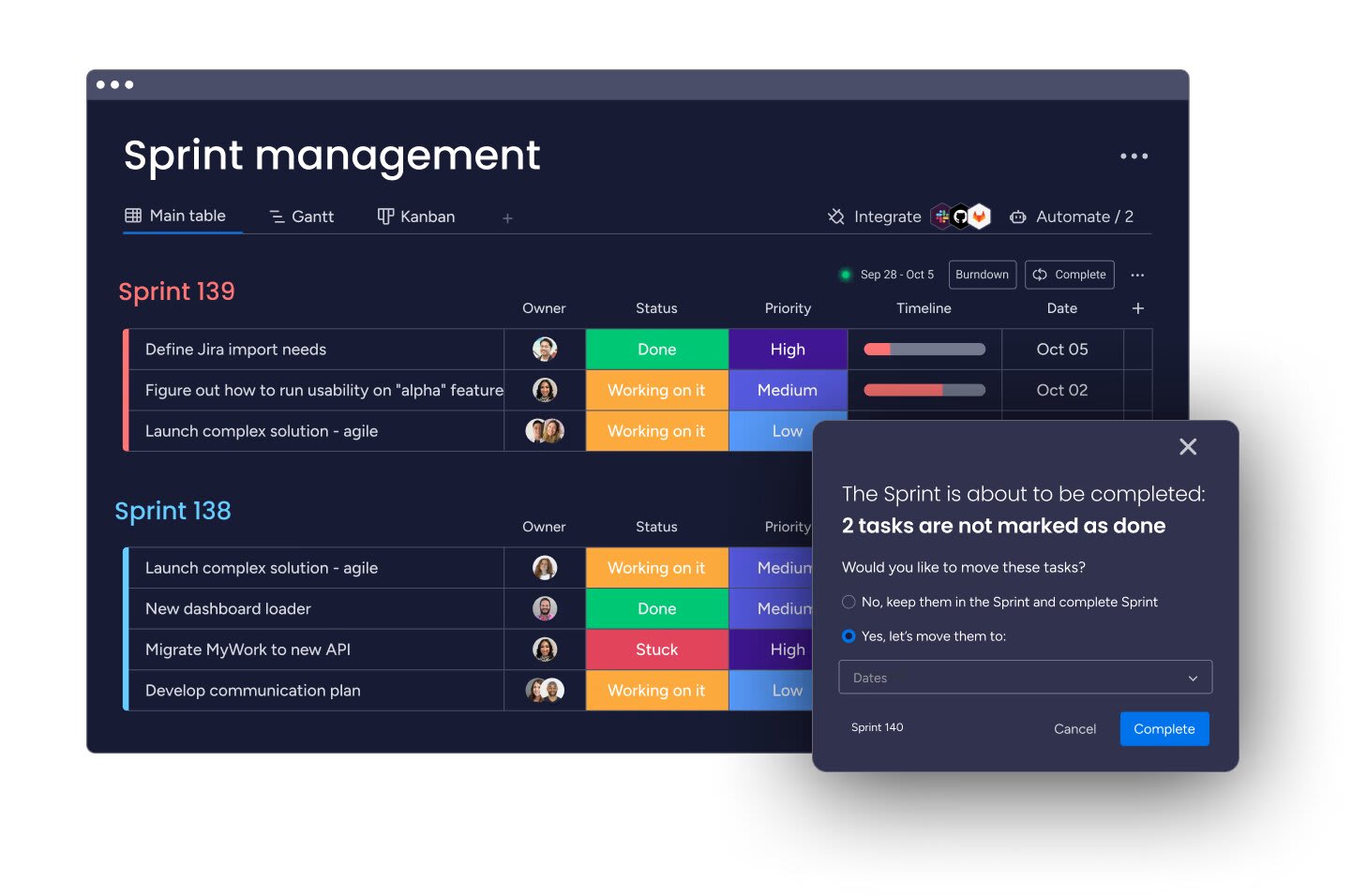
- Collaboration: Ensure constant communication between sales, customer success, and marketing teams to collaborate on product roadmaps, sprints, release plans, customer feedback, product backlogs, and more. For example, you might use monday workdocs to collaborate on code or leverage collective knowledge within a single document.
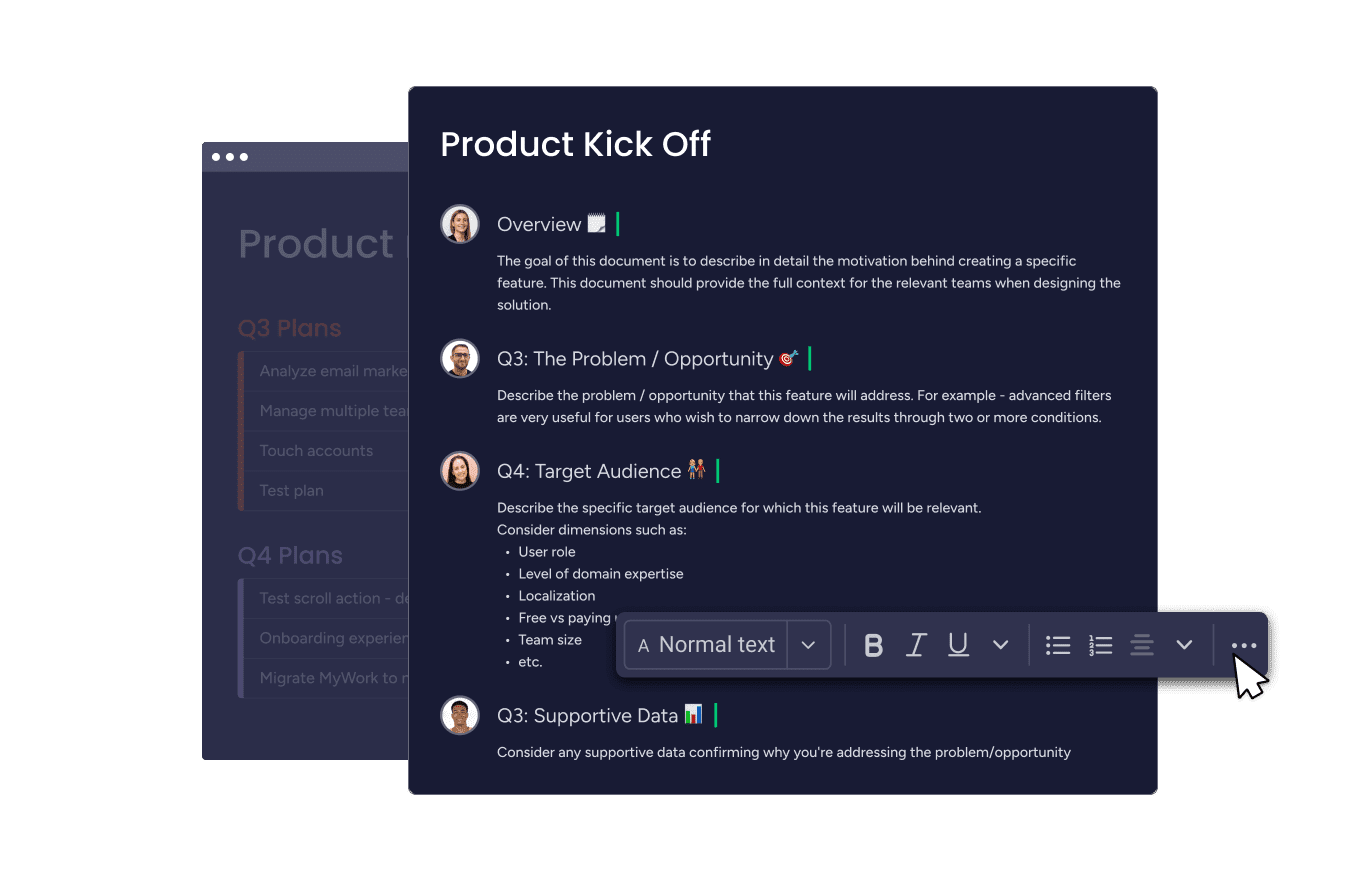
- Track bugs: Effectively report, track, and assign bug tasks to the right team member and view status updates to understand the next steps.
- Ready-made templates: Kickstart your Agile workflow with out-of-the-box solutions for feature requests, roadmaps, sprint management, bug tracking, and more.
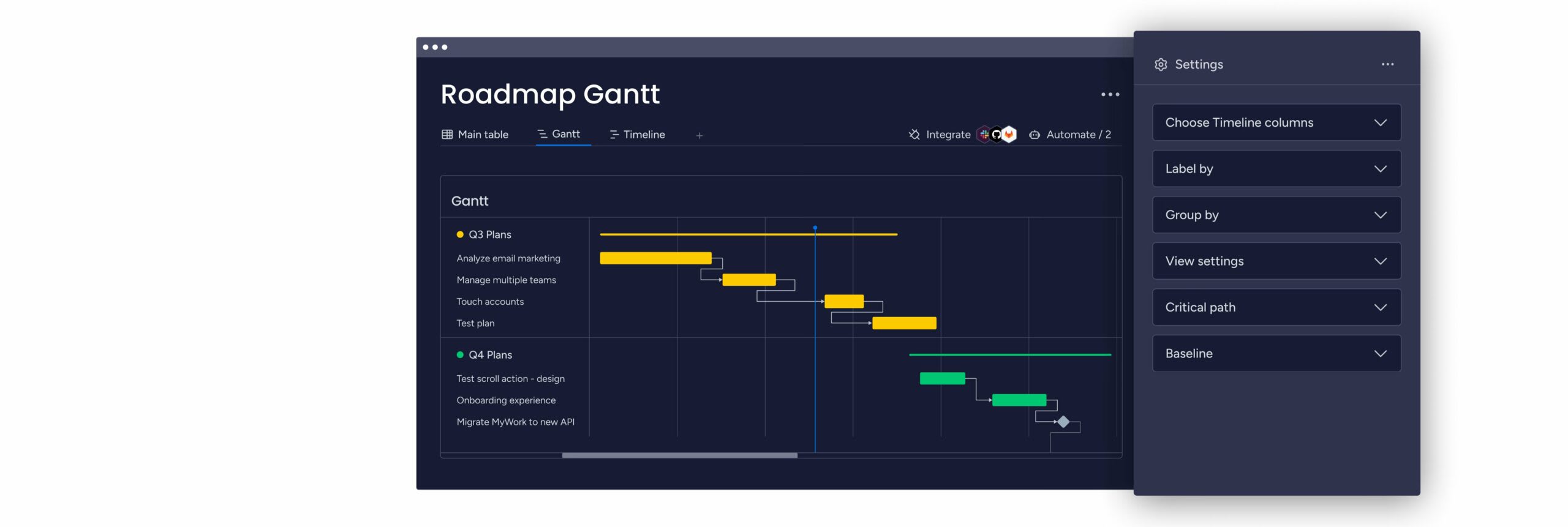
- Integrations: monday dev offers 72+ integrations with other essential tools in your development tech stack. For example, Slack, GitHub, GitLab, Figma, Jira, and more.
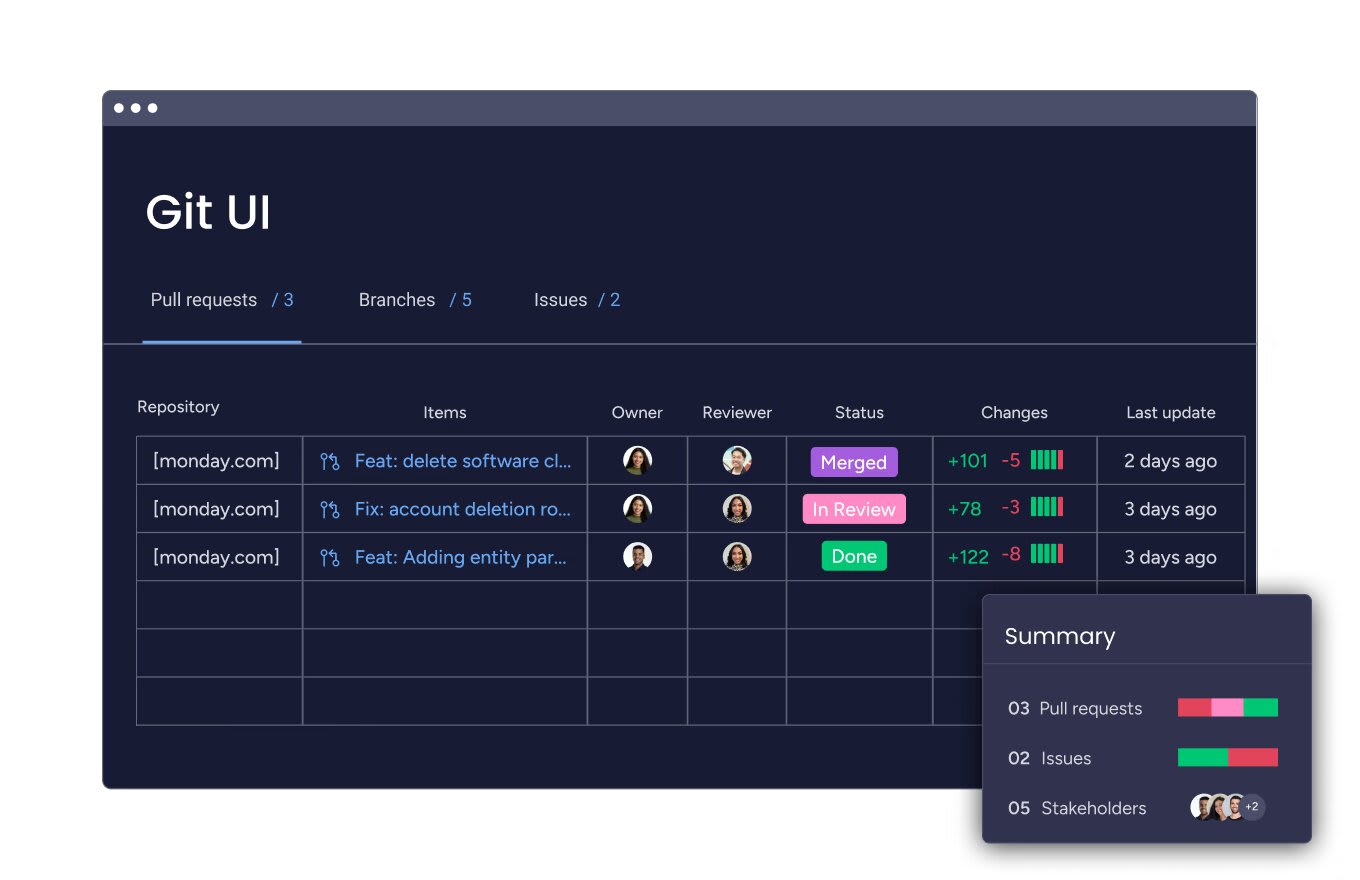
- Automations: Choose from 150+ prebuilt and customizable automation recipes to reduce manual work, eliminate error, and focus on the work that matters.
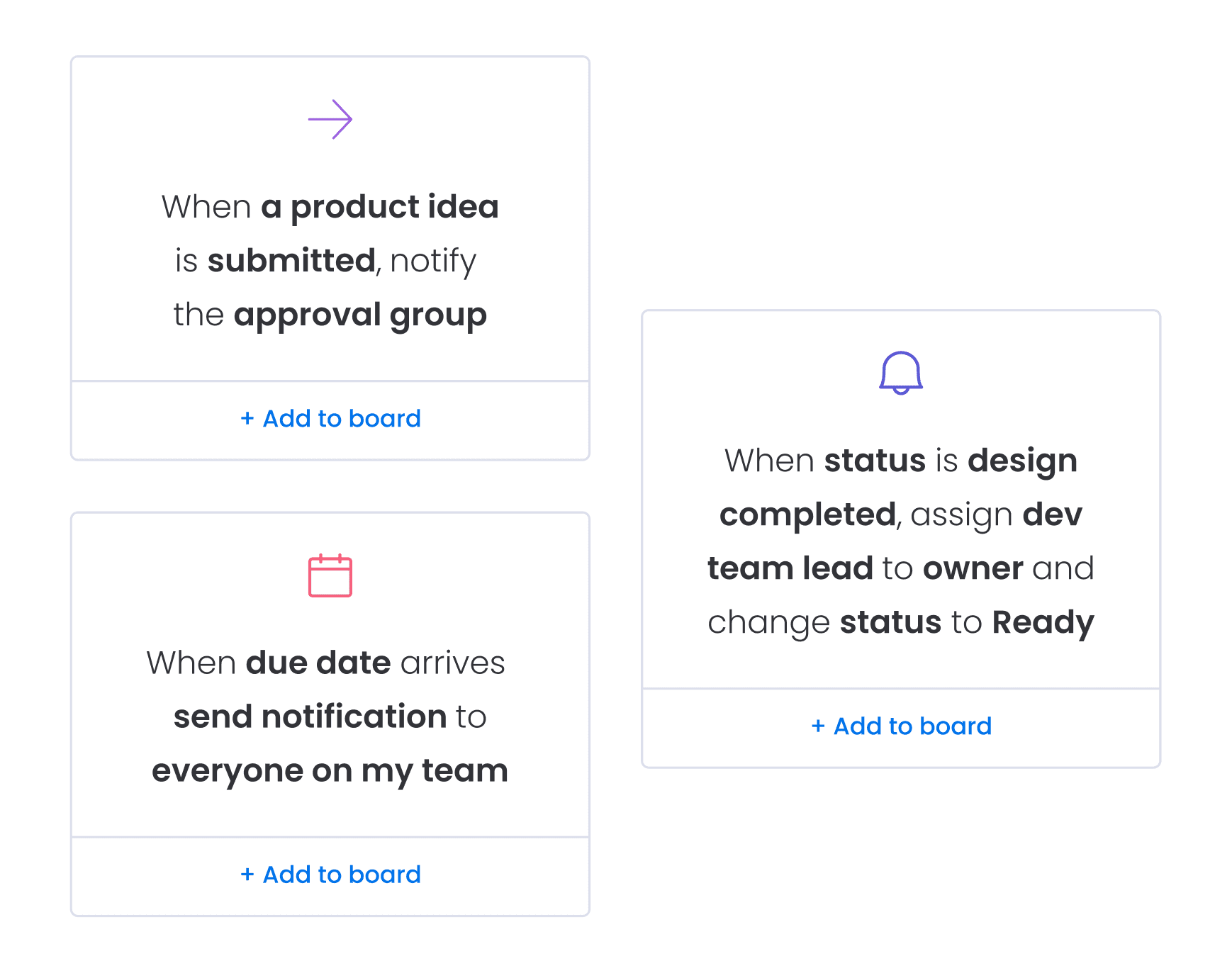
These are just a few of the features available to product managers in monday dev. Take a trial below to explore the platform’s full functionality and learn how it can support your next Agile cycle.
Try monday devSimplify product management in monday dev
Our customers are the ultimate measure of our success. When we develop products that speak to their needs, we’re more likely to generate recurring revenue and retain their loyalty for years to come.
Agile product management is a customer-centric, collaborative, and data-driven methodology that gets results for your organization. And now, using monday dev’s features for sprint management, collaboration, bug tracking, and automation, coupled with ready-made templates and integrations, you have the perfect platform to manage all the complexities of Agile product management. Try out monday dev today.
What is agile methodology in product management?
Agile product management is an iterative development approach emphasizing collaboration, flexibility, and customer feedback. It involves continuous planning, development, testing, and delivery in short cycles called "sprints."
How do minimal viable products fit into agile product management?
Minimal viable products (MVPs) play a key role in agile product management as they allow for early customer feedback and help teams prioritize features based on user needs. MVPs are usually developed in the first few sprints, with subsequent iterations adding more features and improvements based on feedback.
How would you measure product quality in agile product management?
Product quality can be measured in agile product management using customer satisfaction scores, velocity, and burndown charts. These metrics help teams track progress, identify areas for improvement, and make data-driven decisions.
- Tags:
- Agile methodology
 Get started
Get started 
